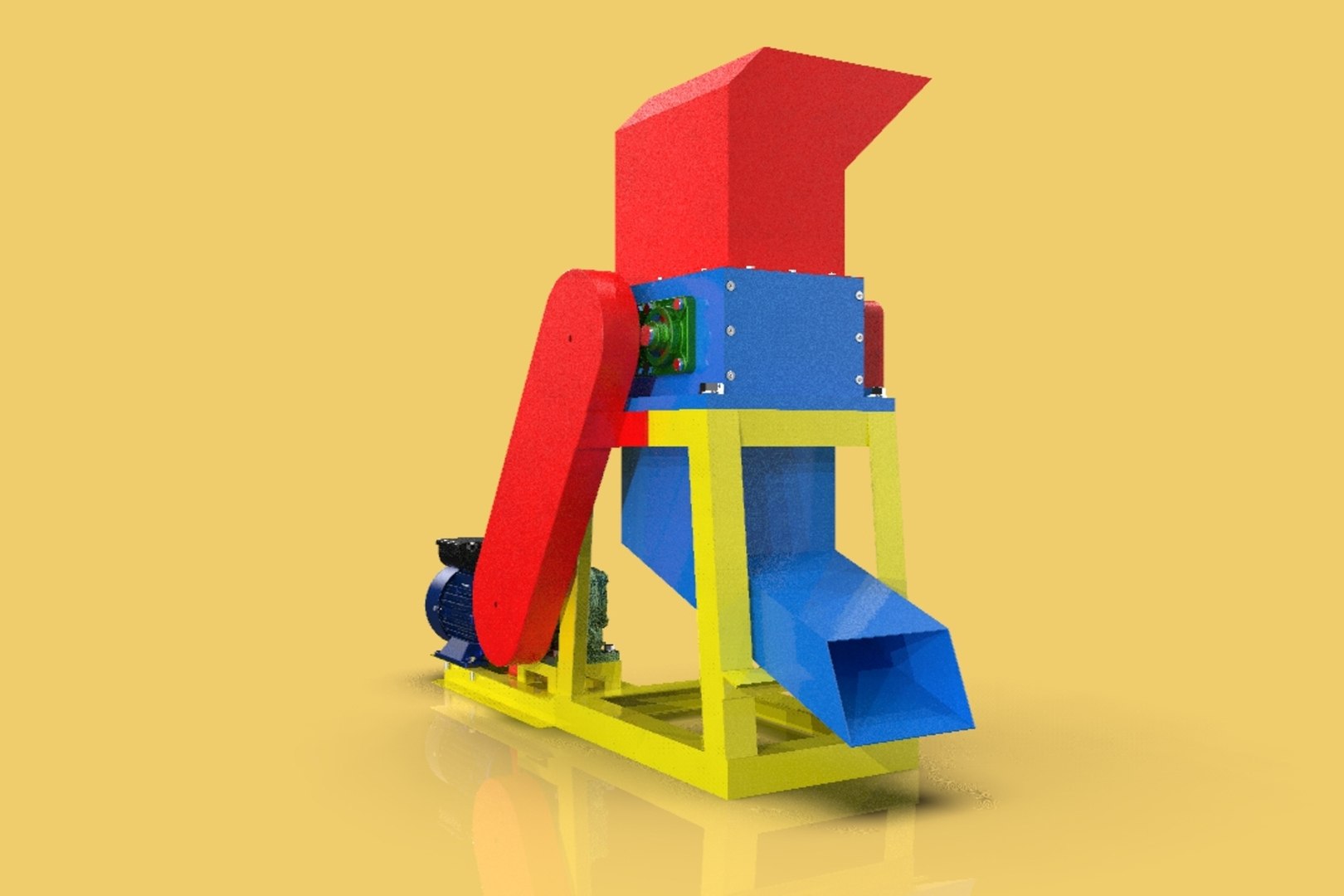-
Table of Contents
Selecting a high-quality plastic crusher is crucial for efficient recycling and waste management. A reliable crusher reduces plastic volume, facilitates transportation, and enables the reuse of valuable materials. This introduction will delve into the key factors to consider when choosing a plastic crusher, ensuring optimal performance and longevity for your specific needs.

Types Of Plastic Crushers
Selecting the right plastic crusher for your operation is crucial for efficient recycling and waste management. A key factor to consider is the type of plastic crusher best suited to your needs. Broadly speaking, plastic crushers fall into several categories, each with its own strengths and ideal applications.
One common type is the **granulator**, known for its robust construction and ability to handle large volumes of plastic. Granulators utilize a rotating rotor equipped with multiple blades to cut and shred plastic materials into smaller, uniform particles. This makes them particularly well-suited for processing thick-walled plastics, pipes, and bulky items.
For operations dealing with lighter materials like films, bags, and thin sheets, a **shredder** might be a more appropriate choice. Shredders employ a system of rotating knives that tear and rip through plastic, effectively reducing its volume. They are available in various configurations, including single-shaft and double-shaft models, each offering different shredding capabilities.
When space is a constraint, a **compact crusher** presents a viable solution. As the name suggests, these crushers are designed for smaller footprints, making them ideal for labs, small-scale recycling operations, and even in-house plastic waste reduction. Despite their compact size, they offer impressive crushing power for their size, effectively handling a range of plastic types.
For applications requiring high throughput and continuous operation, an **industrial crusher** is often the preferred choice. These heavy-duty machines are engineered to withstand demanding workloads and can process large quantities of plastic scrap with ease. Industrial crushers are commonly found in large-scale recycling facilities and manufacturing plants where consistent plastic size reduction is critical.
Beyond these common types, specialized plastic crushers cater to specific needs. For instance, **bottle crushers** are specifically designed to efficiently crush plastic bottles, significantly reducing their volume for easier storage and transportation. Similarly, **
Capacity And Throughput Requirements
When selecting a plastic crusher, understanding your capacity and throughput requirements is paramount. This involves a thorough assessment of your operational needs to ensure the chosen machine aligns seamlessly with your production volume. Begin by determining the average volume of plastic waste generated daily, weekly, or monthly. This data serves as the foundation for calculating the required crusher capacity.
Consider not only the current volume but also anticipate potential future increases in production and, consequently, plastic waste. Opting for a crusher with a capacity that comfortably accommodates both current and projected needs is a strategic decision that mitigates the risk of future bottlenecks. Furthermore, evaluate the type and form of plastic waste generated.
Different crushers excel at handling specific types of plastic, from films and fibers to rigid plastics and purgings. Matching the crusher’s capabilities to the specific characteristics of your waste stream ensures optimal performance and longevity. Throughput, often measured in pounds or kilograms per hour, is another critical factor. It represents the rate at which the crusher can process plastic waste.
Aligning the crusher’s throughput rate with your operational tempo is crucial to prevent backlogs and maintain production efficiency. Factors influencing throughput include the crusher’s design, power, and the size and shape of the plastic being processed. For instance, a high-speed granulator might be ideal for large volumes of thin films, while a slower, heavy-duty crusher might be more suitable for thick, rigid plastics.
Beyond capacity and throughput, consider the crusher’s operating hours. Will it be running continuously or intermittently? Continuous operation demands a robust machine designed for extended use, while intermittent operation allows for more flexibility in capacity and throughput requirements.
Finally, remember that investing in a slightly larger capacity and higher throughput than your current needs can provide valuable flexibility and accommodate future growth. By carefully evaluating these factors, you can confidently select a plastic crusher that aligns with your specific capacity and throughput requirements, ultimately contributing to a
Cutting Mechanism And Blade Quality
The cutting mechanism and blade quality are paramount when selecting a high-quality plastic crusher. This critical component directly impacts the machine’s performance, efficiency, and longevity. Therefore, understanding the nuances of different cutting mechanisms and blade materials is essential for making an informed decision.
First and foremost, consider the type of plastic you intend to crush. For softer plastics like polyethylene (PE) and polypropylene (PP), a shear cutting mechanism, where blades slide past each other like scissors, is often sufficient. This mechanism excels at creating clean, consistent cuts with minimal dust. However, for tougher plastics such as ABS, nylon, or polycarbonate, a more robust approach is necessary. In such cases, a claw cutting mechanism, which utilizes sharp teeth to tear and crush the material, proves more effective.
Furthermore, the blade material itself plays a crucial role in the crusher’s performance and lifespan. High-carbon steel blades, known for their hardness and durability, are a popular choice for general-purpose plastic crushing. They offer a good balance between cost and performance, making them suitable for a wide range of applications. For particularly demanding applications involving abrasive or reinforced plastics, consider investing in blades crafted from tool steel or even carbide. These materials boast exceptional wear resistance and can withstand the rigors of crushing tough, abrasive materials, ultimately extending the lifespan of your crusher.
Beyond the material, pay close attention to the blade design and construction. Look for blades with a serrated or toothed edge, as these features enhance the cutting efficiency and reduce the force required to crush the plastic. Additionally, ensure the blades are securely mounted and easily adjustable. This allows for optimal cutting performance and facilitates straightforward maintenance and replacement when necessary.
Finally, don’t overlook the importance of blade maintenance. Regular cleaning and sharpening are essential for maintaining optimal cutting performance and extending the lifespan of your blades. A dull blade not only reduces efficiency but also puts undue stress on the crusher’s motor
Motor Power And Energy Efficiency
When selecting a plastic crusher, motor power and energy efficiency are paramount considerations that directly impact performance and operational costs. A crusher’s motor power, often measured in horsepower or kilowatts, dictates its ability to effectively process plastic materials. A higher horsepower motor generally translates to greater crushing force, enabling the machine to handle larger volumes and tougher plastics with ease. However, it’s crucial to strike a balance. While an excessively powerful motor might seem appealing, it can lead to unnecessary energy consumption if the application doesn’t demand it.
This is where energy efficiency comes into play. A high-quality plastic crusher should not only possess sufficient power but also operate efficiently to minimize energy waste and reduce operating expenses. Look for crushers equipped with energy-efficient motors, such as those with premium efficiency ratings. These motors are designed to convert a higher percentage of electrical energy into mechanical power, reducing energy losses in the form of heat. Furthermore, consider crushers that incorporate features like variable frequency drives (VFDs). VFDs allow the motor speed to be adjusted based on the specific crushing requirements, optimizing energy consumption by matching power output to the task at hand.
By selecting a crusher with the appropriate motor power and a focus on energy efficiency, businesses can reap significant benefits. Firstly, the right motor power ensures efficient and effective plastic crushing, preventing bottlenecks and maximizing throughput. Secondly, energy-efficient operation translates into lower electricity bills, reducing operational costs and enhancing profitability. Moreover, environmentally conscious businesses can minimize their carbon footprint by opting for energy-efficient solutions. In conclusion, carefully evaluating motor power and energy efficiency is essential when choosing a high-quality plastic crusher. By striking a balance between power and efficiency, businesses can optimize their crushing operations, reduce costs, and contribute to a more sustainable future.
Durability And Maintenance
When investing in a plastic crusher, durability and ease of maintenance are paramount considerations. A robust machine translates directly into long-term cost savings and operational efficiency. Therefore, prioritize crushers constructed from high-grade materials, such as hardened steel for the crushing blades and thick, reinforced steel for the chamber. These choices ensure the crusher can withstand the stresses of continuous operation and resist wear from abrasive plastics.
Furthermore, a well-designed crusher should offer easy access to key components for maintenance. Look for features like swing-open doors or removable panels that simplify cleaning and inspection. This accessibility allows for quick removal of plastic build-up, a common issue that can hinder performance and potentially damage the machine over time.
Beyond design, the availability of quality after-sales service and readily available spare parts is crucial. A reputable manufacturer will offer comprehensive warranties and responsive technical support, minimizing downtime in case of unexpected issues. Additionally, inquire about the availability and cost of common wear parts like blades and screens. Easy access to these parts ensures swift repairs and keeps the crusher operating at peak efficiency.
Remember, a well-maintained crusher is an investment that pays dividends. Regular maintenance, facilitated by thoughtful design and readily available support, ensures consistent performance, extends the lifespan of the machine, and ultimately contributes to a more efficient and cost-effective operation. By prioritizing durability and ease of maintenance in your selection process, you are setting the stage for a successful and productive experience with your plastic crusher.
Safety Features And Compliance
When selecting a plastic crusher, prioritizing safety features and compliance with industry standards is non-negotiable. This commitment to safety not only protects your workforce but also ensures operational efficiency and mitigates potential liabilities. First and foremost, look for crushers equipped with robust safety interlocks. These mechanisms should automatically shut down the machine if a safety door or access panel is opened during operation. This immediate response prevents accidental contact with moving parts and significantly reduces the risk of injury.
Furthermore, emergency stop buttons should be prominently positioned and easily accessible from all sides of the machine. These buttons provide a crucial last line of defense in critical situations, allowing for instant shutdown in case of emergencies. Beyond these fundamental safety features, consider crushers that incorporate advanced safety technologies. For instance, some models utilize light curtains or laser scanners to create a virtual safety perimeter around the crushing chamber.
These systems can detect any obstruction within the designated area and automatically halt the crushing process, preventing accidents caused by unexpected intrusions. Compliance with industry-specific safety standards is equally paramount. Ensure the plastic crusher you choose meets or exceeds the regulations set forth by organizations such as OSHA, CE, or other relevant bodies in your region.
These standards often dictate specific safety requirements related to machine guarding, electrical systems, noise levels, and operator training. Verifying compliance not only demonstrates your commitment to workplace safety but also provides legal protection and peace of mind. Moreover, prioritize manufacturers who prioritize safety in their design and manufacturing processes.
Look for companies with a proven track record of producing reliable and safe equipment. Reputable manufacturers will readily provide detailed safety documentation, including risk assessments, operating manuals, and maintenance guidelines. By carefully evaluating safety features and compliance aspects, you can confidently select a plastic crusher that prioritizes the well-being of your employees while ensuring a secure and productive work environment.



